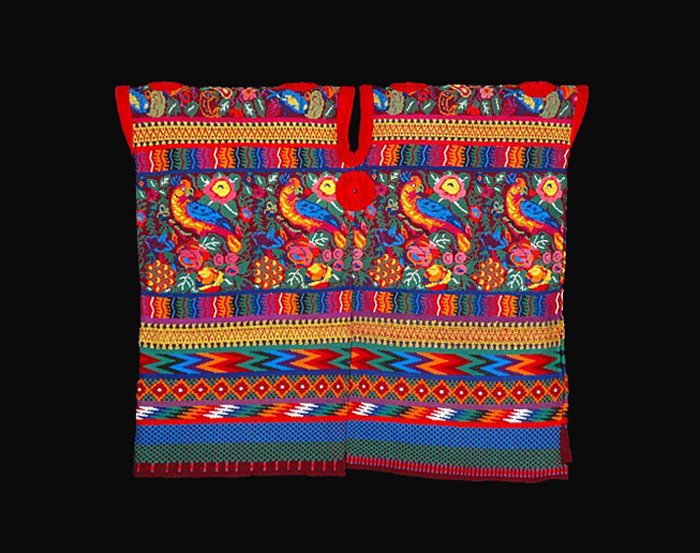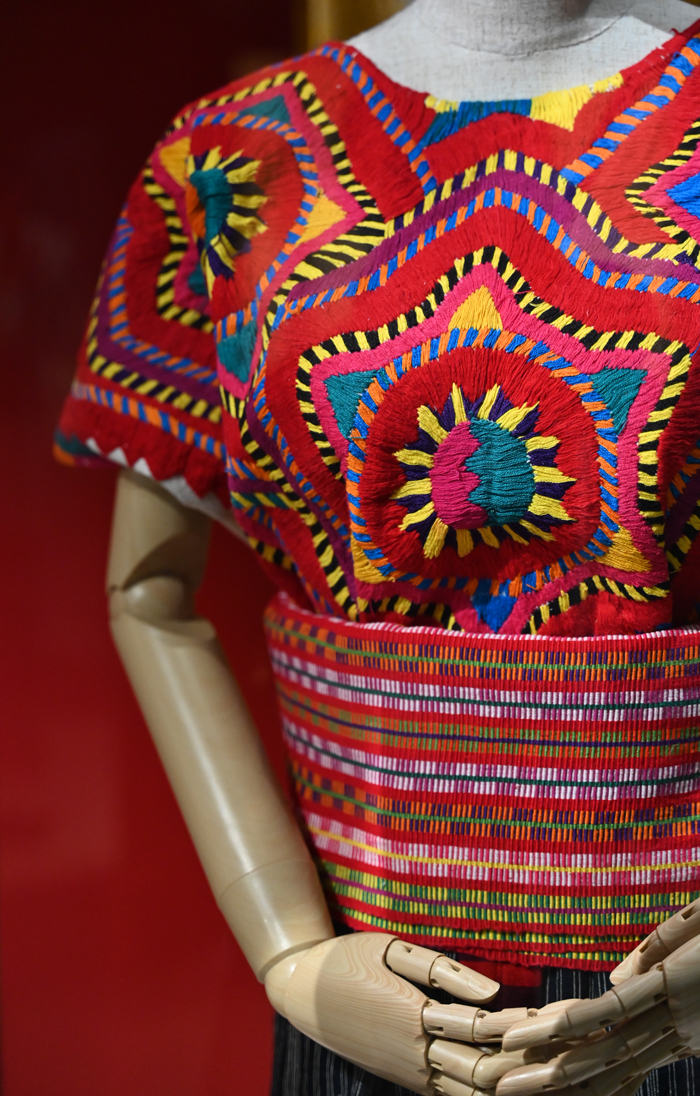April 12, 2023 - March 1, 2024
Curators
Anne Bissonnette, PhD, Siming Guo, PhD, Elsie Osei, MFA, and Chiara Power, BA

Globalization and Resistance
Globalization and industrialization have affected textile production and dress practices worldwide. Though evolutionary changes can be seen in Maya and Ghanaian weave structures, fibers, colours, and motifs over time, there are insidious forces also at play. Inspiration has often turned to appropriation in the hands of designers and transnational companies. For many, such practices are deemed “culturally and socially destructive.”[1]
One organization led by Maya women, the Women’s Association for Development of Sacatepequez (AFEDES), has been active in the fight to defend indigenous rights. In a call for justice, the AFEDES demanded that their government recognize their plight.[2] They wrote: “Faced with the problems of racism, devaluation, plagiarism, theft, and the appropriation of our creations as indigenous people…. Our movement demands that the government protect collective intellectual property rights over our textiles and Mayan apparel, which are vulnerable to appropriation, commodification, and inappropriate uses that violate our community standards and spiritual values.”[3] Courts have sided with them repeatedly but the fight is on-going.
Textiles can represent a collective. For both Maya and Ghanaian people, their intricately woven and brightly coloured textiles and dress sets them apart from others who conform to global Western influences. Textiles made very differently from Western ones can be labeled quaint or unprofessional by outsiders.[4] Maya women must often combat harmful stereotypes when wearing traje.[5] To fight back, several campaigns in Ghana encourage the wearing of locally-made clothing and fabrics on Fridays and in the month of March to support national industries and to celebrate their national identity.[6] By wearing clothing that communicates Ghanaian and Mayan identities in professional and everyday settings, people can challenge the idea that Western dress is a universal default.
Anne Bissonnette, PhD
Siming Guo, PhD
Elsie Osei, MFA
Chiara Power, BA

[1] Noga Bernstein, “Maya Modern: Ruth Reeves and the Guatemalan Exhibition of Textiles and Costumes,” American Art 34, no. 3 (2020): 46.
[2] “Asociación Femenina para el Desarrollo de Sacatepéquez,” Thousand Currents, https://thousandcurrents.org/partner/asociacion-femenina-para-el-desarrollo-de-sacatepequez-2/.
[3] Claire Gilmore, “Group Rights,” Watershed Sentinel, March 26, 2018, https://watershedsentinel.ca/articles/group-rights/.
[4] Joanne Bubolz Eicher, “Cosmopolitan and International Dress” in Dress and Identity, ed. Mary Ellen Roach-Higgins, Joanne Bubolz Eicher, and Kim K. P. Johnson (New York: Fairchild Publications, 1995), 59.
[5] MacLeod, “Mayan dress as text,” 684.
[6] “NCC launches Wear Ghana Festival,” Citi Newsroom, March 2, 2023, https://citinewsroom.com/2023/03/ncc-launches-wear-ghana-festival/. “National Friday Wear Programme launched,” GhanaWeb, 12 November 2004, https://www.ghanaweb.com/GhanaHomePage/NewsArchive/National-Friday-Wear-Programme-launched-69720.
